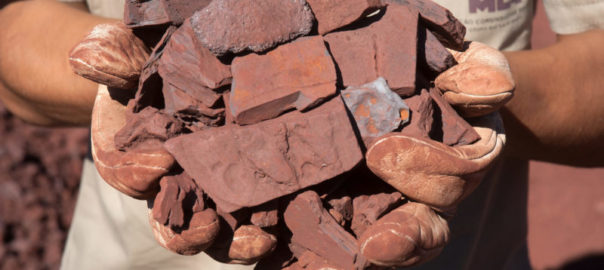Article by Michael Phillips courtesy of Australian mining.


Australian resources export revenue reached a new record high of $351 billion in 2021, according to the latest data from the Australian Bureau of Statistics.
The record shows a 21 per cent increase from the previous high set in 2019, with resources contributing 68 per cent of total Australian export revenue.
Iron ore was the highest contributing resource with $154.2 billion, up 32 per cent from 2020 to set its own record high.
Coal contributed $62 billion, up 43 per cent from 2020, with aluminium (including alumina and bauxite) adding $13.7 billion, up 15 per cent from 2020.
Copper (metal and concentrates) added $12.1 billion, up 14 per cent from 2020 and a new record high, while gold contributed $25.9 billion.
Minister for Resources and Water Keith Pitt said the latest monthly figures show Australia’s resource and energy exports continue to surge in record territory.
“It is important to thank the men and women in our resources and energy sector for their stellar work in ensuring our valuable commodities are meeting global demand,” Pitt said.
“These export earnings continue to create and sustain jobs for Australians, particularly in regional areas.
“Resources remain far and away Australia’s biggest export earner and continue to underpin the strength of the national economy.
“The outlook for our resources and energy sector continues to be positive as global demand for Australian resources remains strong, particularly for our coal and gas.”
Minerals Council of Australia chief executive officer Tania Constable said the record growth demonstrates the importance of the mining industry to Australia’s economy.
“This incredible growth in revenue has also delivered Australia its largest ever trade surplus ($123 billion) during the COVID-19 pandemic, at a time when it needed economic stimulus the most,” Constable said.
“Ongoing demand for resources is driving the 258,000 direct mining jobs, with significant benefits flowing to all of Australia and particularly regional communities.
“Australia is proving again how its highly-skilled, innovative mining workforce is competitively supplying the minerals for the future.”
However, Constable added it was important not to take the positive trade figures for granted.
“More must be done to attract the investment needed for new projects in Australia to meet growing world demand for minerals for every day living and to drive the energy transition to net zero emissions,” she said.
“Over a decade ago, the investment phase of the mining boom underpinned the nation’s rebound from the Global Financial Crisis with over $370 billion spent in the five years to 2014 developing new resources projects and building critical infrastructure in regional areas.”
Constable said while Australia has significant endowments of copper, lithium, nickel, gold and rare earth elements, developing these deposits into the mines of the future is far from guaranteed.
“Globally competitive tax rates, more workplace flexibility and increased government funding for pre-competitive exploration programs are all essential to mining’s long-term future and Australia’s economic prosperity,” she said.
“And when the mining industry is strong, all Australians benefit.”
To keep up to date with Australian Mining, subscribe to our free email newsletters delivered straight to your inbox. Click here.
